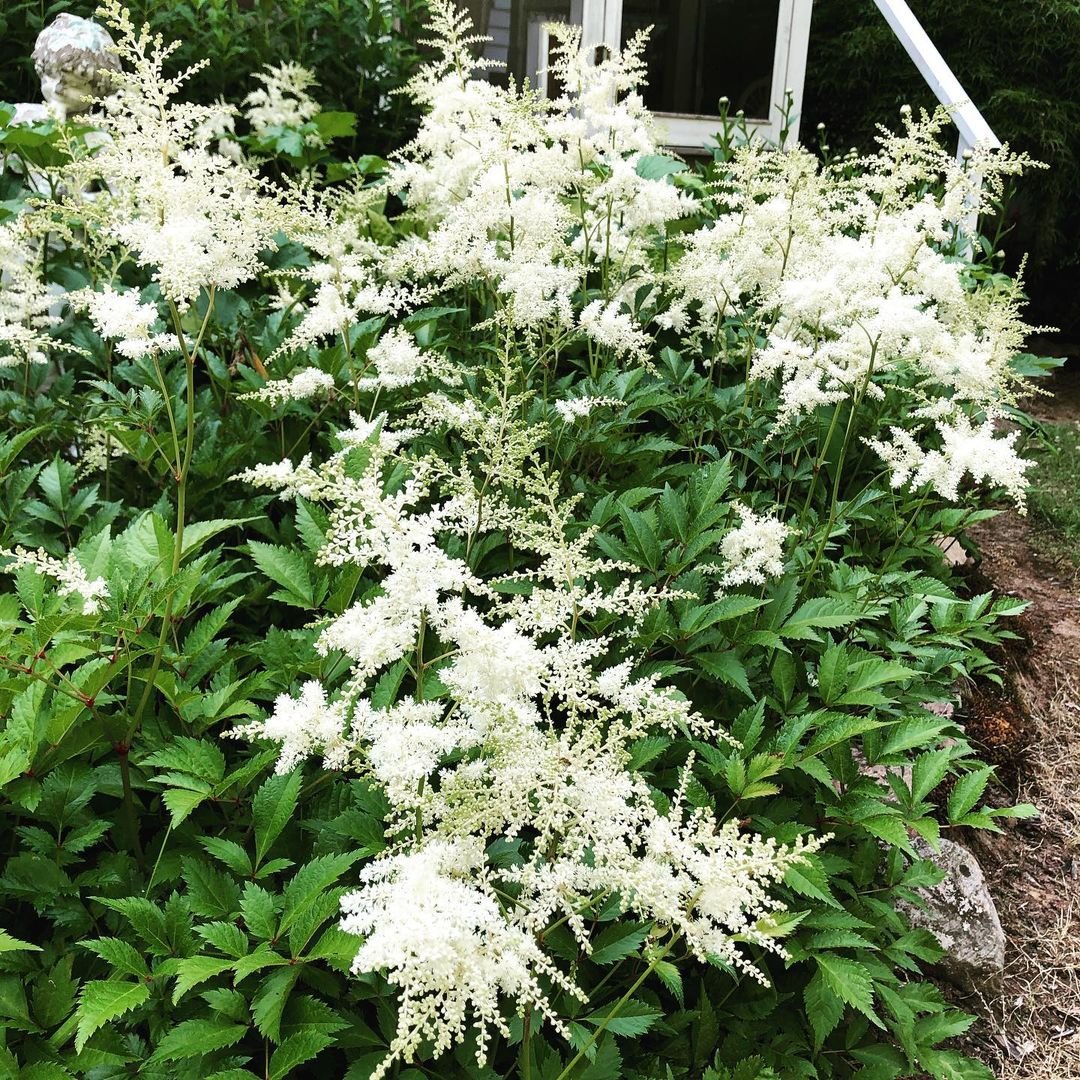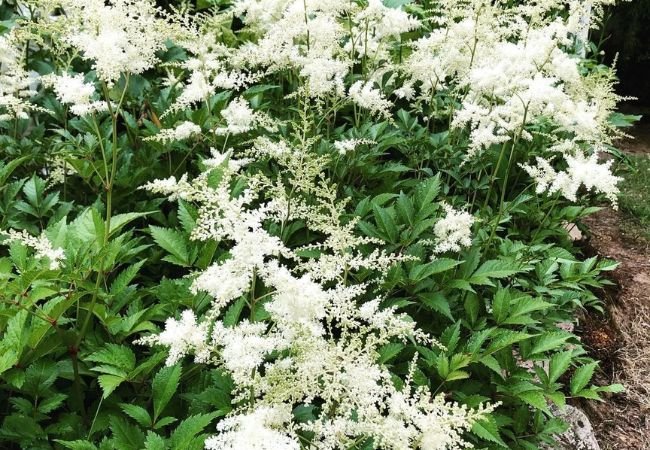Discover how to grow and care for White Astilbe Visions, a stunning perennial known for its feathery white plumes. Learn expert tips on planting, maintenance and landscape design for these shade-loving beauties.
White Astilbe Visions are elegant perennials prized for their feathery white plumes and lush, dark green foliage. They thrive in partial to full shade, prefer moist, well-draining soil, and bloom in mid to late summer. These plants are excellent for adding texture and brightness to shaded gardens and are relatively low-maintenance.
Here’s a detailed chart with information on White Astilbe:
| Category | Information |
|---|---|
| Botanical Name | Astilbe spp. |
| Common Name | White Astilbe, False Goat’s Beard |
| Plant Type | Perennial |
| Hardiness Zone | USDA Zones 3-8 |
| Sun Exposure | Partial shade to full shade |
| Soil Type | Moist, well-drained, rich, organic soil |
| Watering | Moderate to high (keep soil consistently moist) |
| Growth Habit | Upright, clumping |
| Height/Spread | 18 inches to 4 feet tall, 1-3 feet wide (varies by variety) |
| Special Features | Showy, plume-like white flowers, attractive foliage, shade-tolerant, deer-resistant, attracts pollinators, low-maintenance |
Introduction to White Astilbe Visions

As a horticulturist with over two decades of experience in shade garden design, I’m thrilled to share my expertise on growing and caring for White Astilbe Visions. These graceful plants can transform shaded areas into elegant, flowering landscapes.
Understanding White Astilbe Visions
White Astilbe Visions, scientifically known as Astilbe chinensis ‘Vision in White’, are part of the Saxifragaceae family.
They are known for their:
- Tall, feathery white plumes
- Dark green, fern-like foliage
- Shade tolerance
- Mid to late summer blooming period
For more information on Astilbe species, visit the Missouri Botanical Garden’s Astilbe page.
Planting White Astilbe Visions
Timing
Plant White Astilbe Visions in spring or early fall for best results.
Location
Choose a spot with:
- Partial to full shade
- Protection from harsh afternoon sun
- Moist, well-draining soil
Soil Preparation
Prepare the soil by:
- Adding organic matter like compost or leaf mold
- Ensuring good drainage
- Maintaining a slightly acidic to neutral pH (6.0-7.0)
For more details on soil preparation for shade plants, check out Cornell University’s Gardening Resources.
Planting Process
- Dig holes about 1-2 feet apart, as wide as the root ball
- Place plants at the same depth they were in their containers
- Backfill with soil and water thoroughly
- Apply a layer of mulch to retain moisture
Caring for White Astilbe Visions
Watering
- Keep soil consistently moist but not waterlogged
- Water deeply during dry spells
- Consider using a soaker hose for efficient watering
Fertilizing
- Apply a balanced, slow-release fertilizer in spring
- Side-dress with compost annually
- Avoid over-fertilizing, which can lead to weak growth
For more information on fertilizing perennials, visit the University of Minnesota Extension’s guide.
Pruning and Maintenance
- Cut back dead foliage in late fall or early spring
- Divide plants every 3-4 years to maintain vigor
- Leave spent plumes for winter interest and cut back in spring
Pest and Disease Management
Common issues include:
- Leaf spot: Improve air circulation and avoid overhead watering
- Powdery mildew: Ensure good air flow and proper spacing
- Japanese beetles: Handpick or use organic controls
For more on Astilbe diseases, check out Penn State Extension’s Plant Disease Fact Sheets.
Landscape Design with White Astilbe Visions
Companion Plants
Pair White Astilbe Visions with:
- Hostas for contrasting foliage
- Ferns for a woodland feel
- Bleeding hearts for early season color
Design Ideas
- Use as a border plant in shaded areas
- Create a white garden with other shade-loving white flowers
- Plant in groups of 3-5 for maximum impact
For inspiration on shade garden design, visit the Royal Horticultural Society’s Shade Garden page.
White Astilbe Visions are a stunning addition to any shade garden, offering elegant plumes and lush foliage. With proper care and placement, these perennials can thrive for years, bringing beauty and texture to shaded landscapes. Remember to keep them well-watered, provide rich, moist soil, and protect them from harsh afternoon sun. Whether you’re an experienced gardener or a beginner, White Astilbe Visions are sure to add a touch of elegance to your garden.
For more in-depth information on Astilbe cultivation, visit the American Horticultural Society’s website.








Leave a Reply